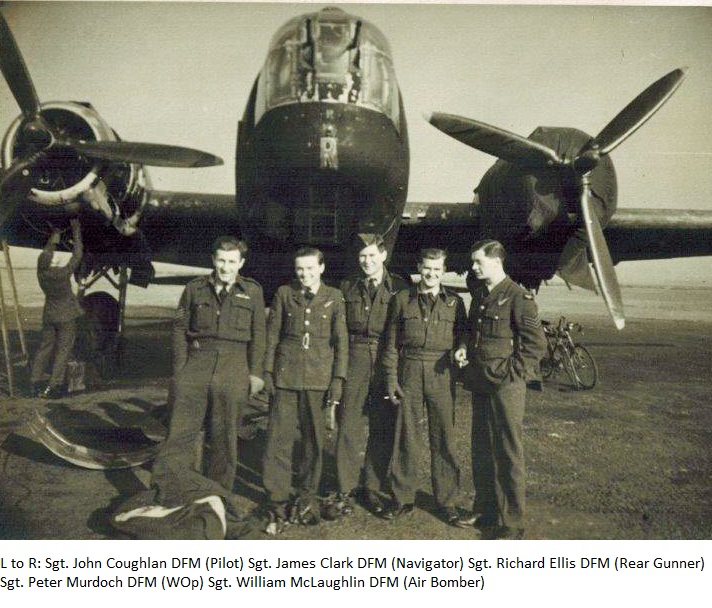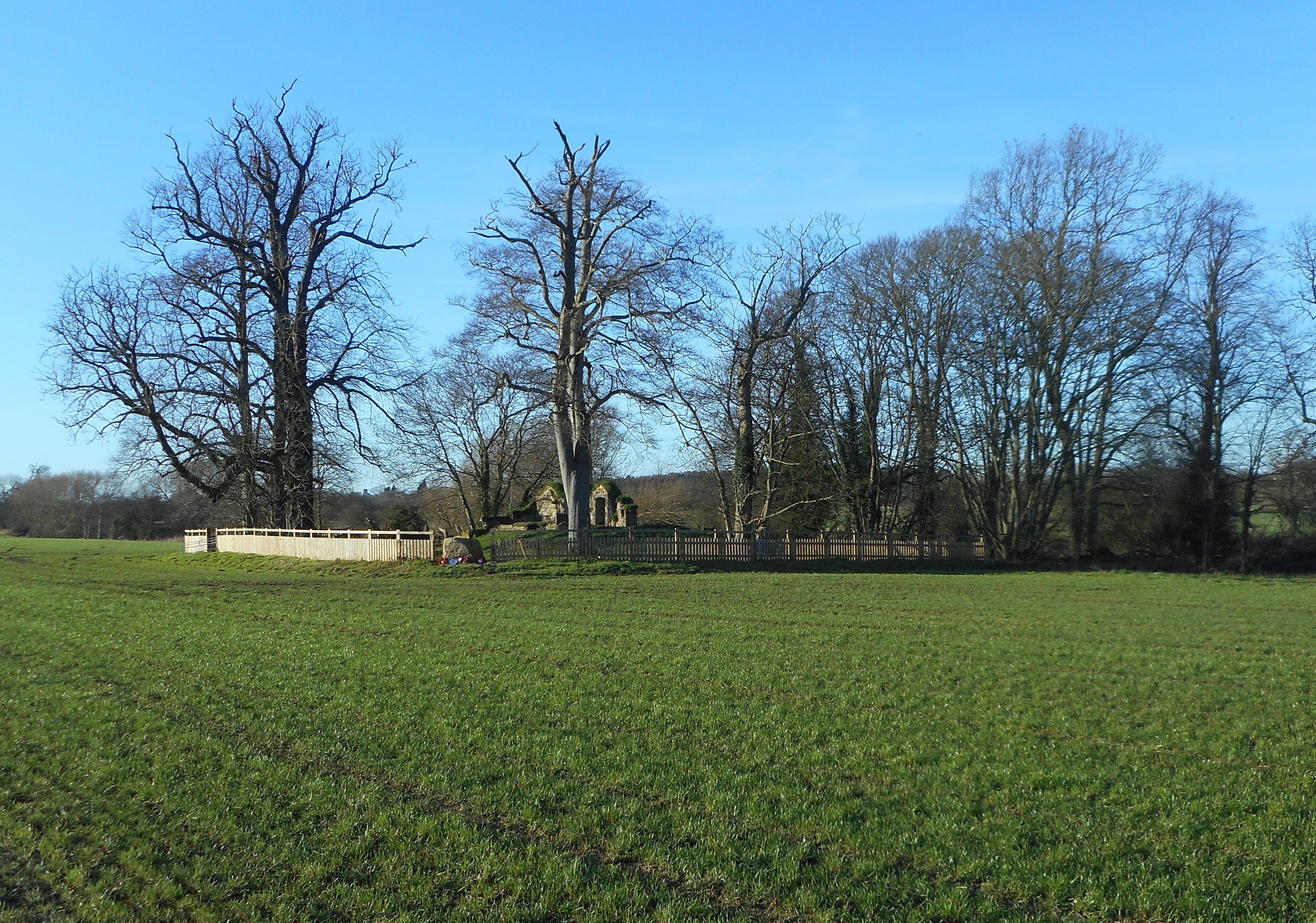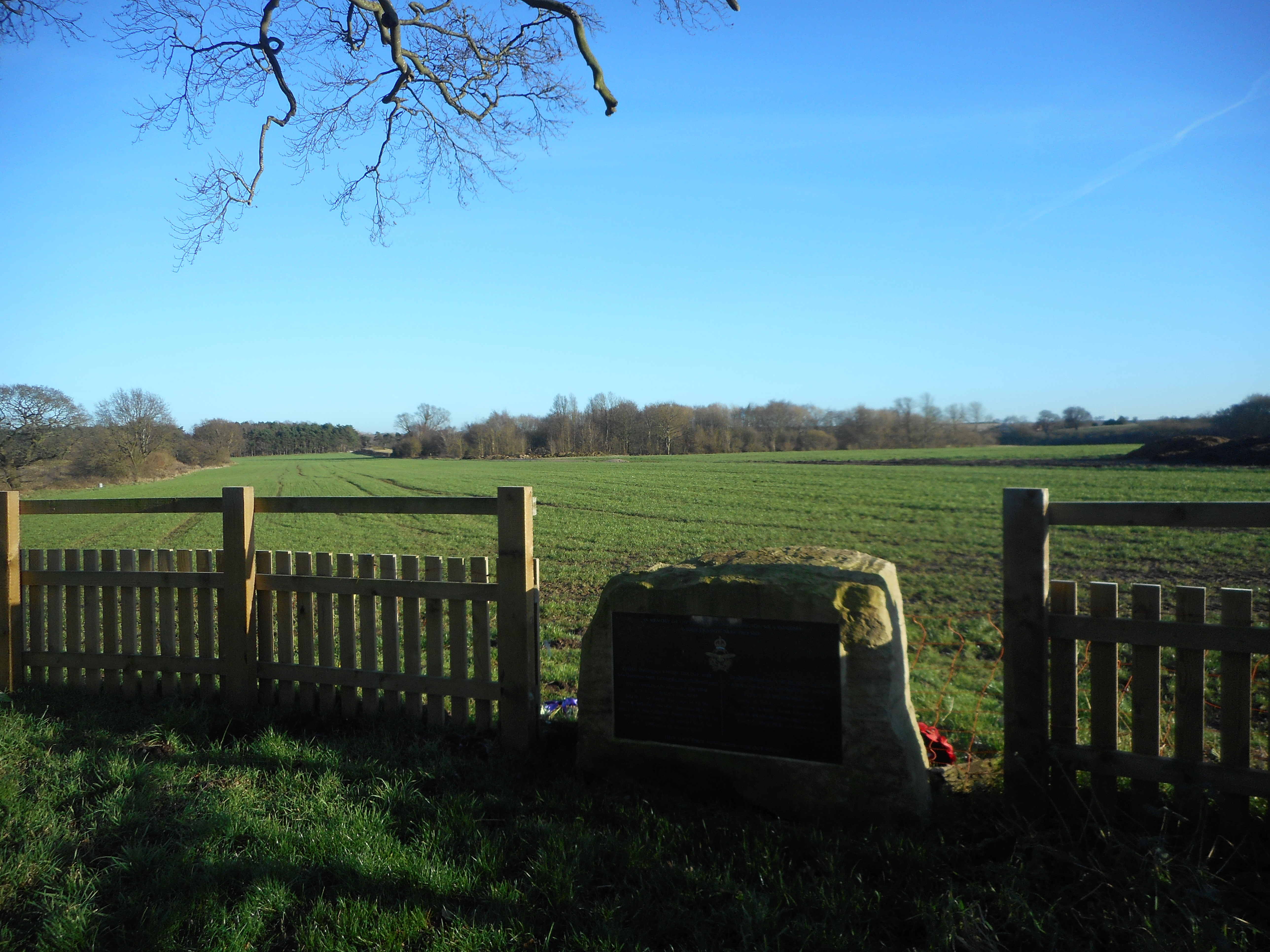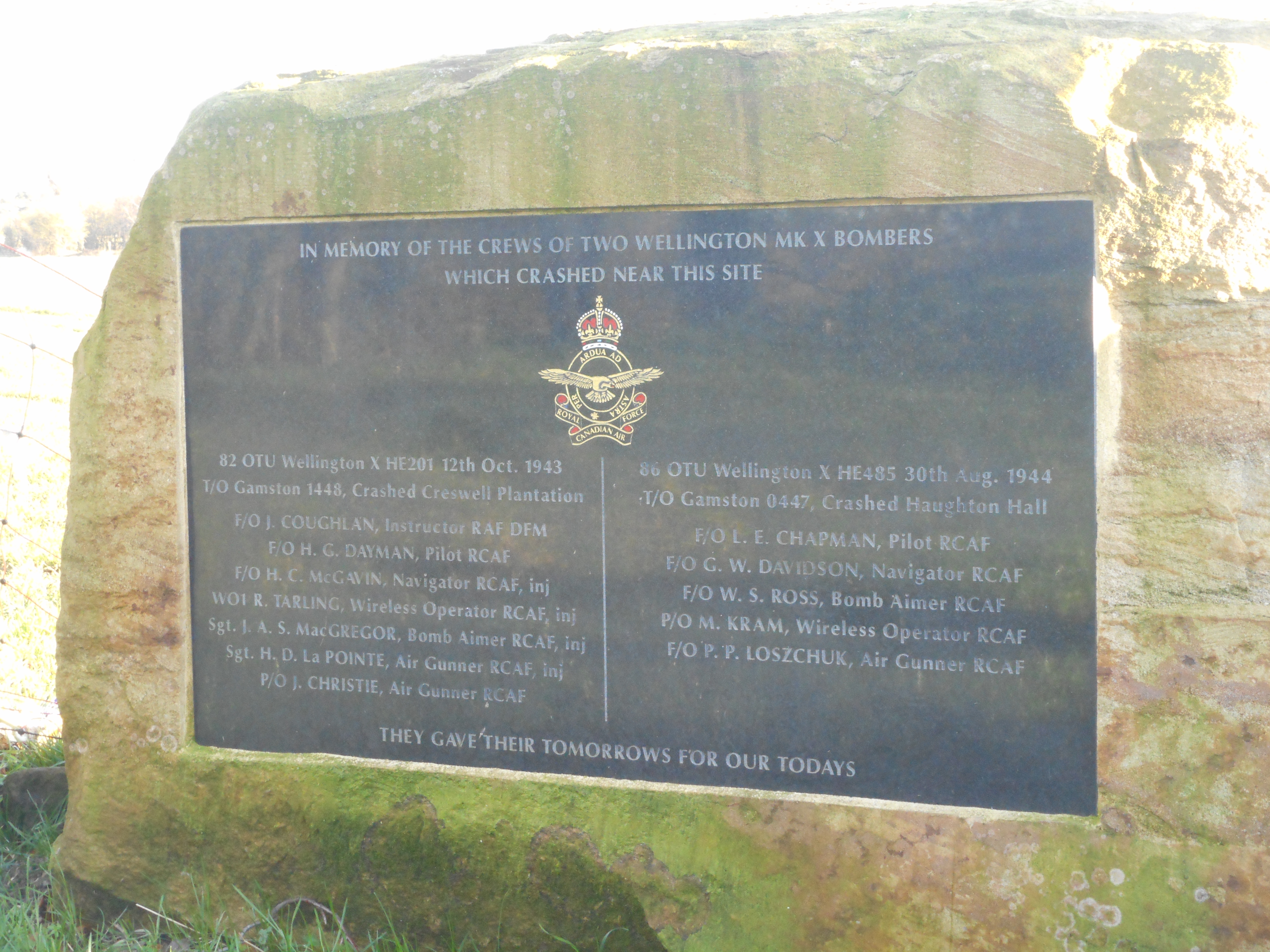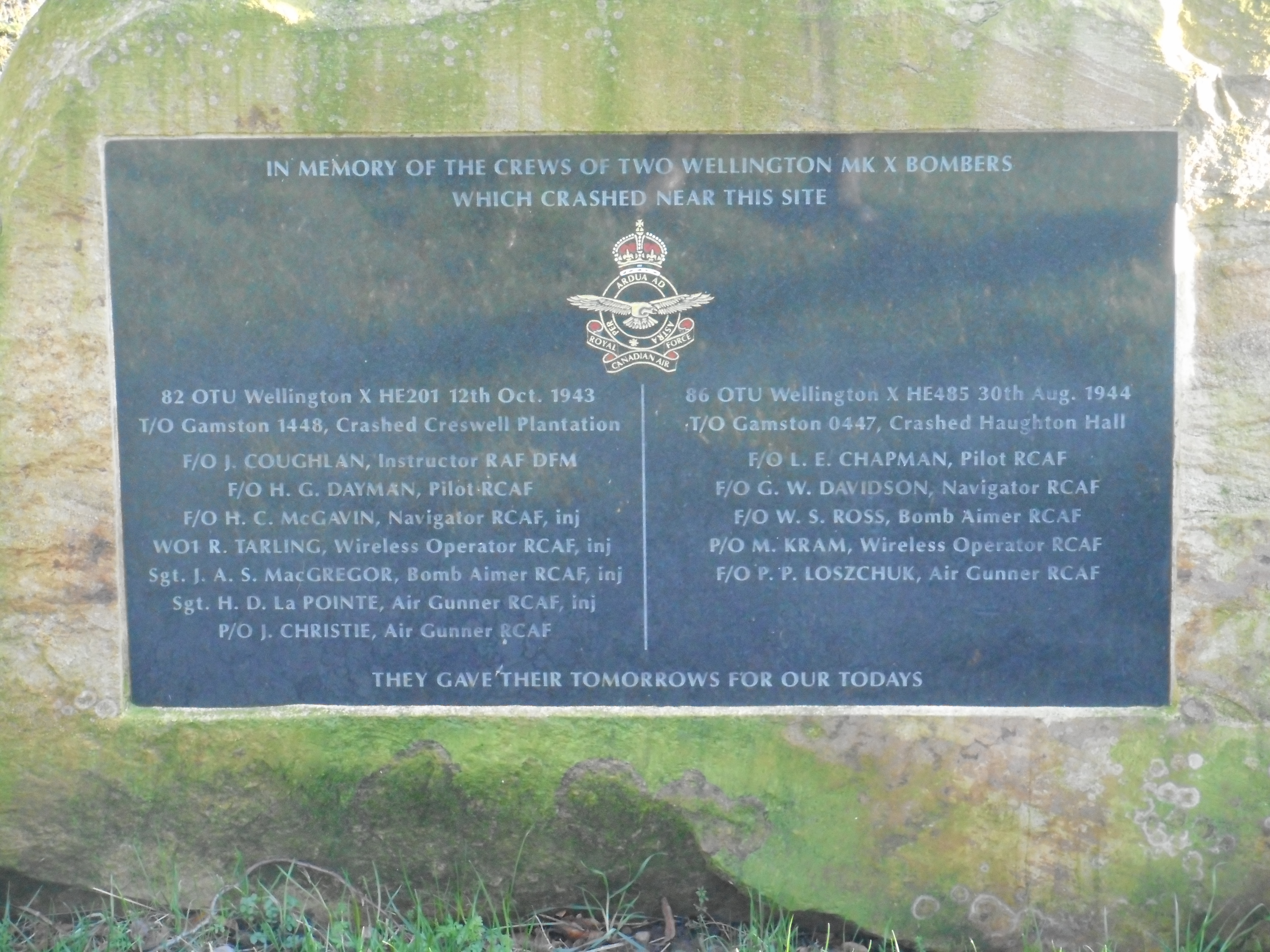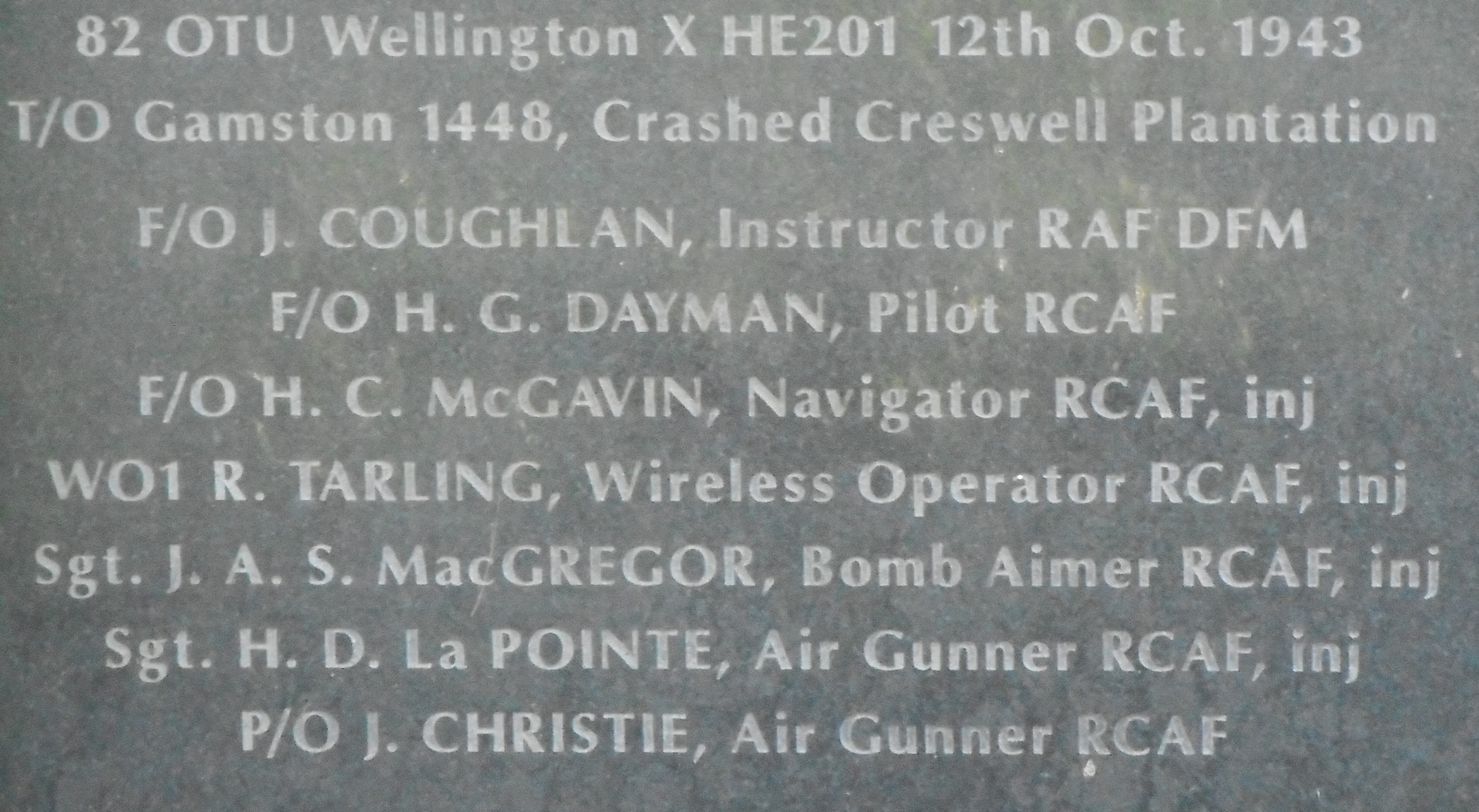| Feature by Paul Allonby RHS RAeS 30.08.21: THE FIRE ENGINES AND AMBULANCES were rolling even before the stricken Wellington became airborne. With thick black smoke suddenly pouring from the port engine, the bomber limped into the air. The aircraft had passed the point of no return on its take-off run at RAF Gamston in Notts when a catastrophic malfunction in the Hercules engine sparked disaster. The control tower staff pressed the crash alarm and the station's emergency vehicles sprinted into action while the Duty Officer watched the aircraft's progress. Its path took it beyond a line of trees at the end of the runway, heading towards countryside dotted with trees. The pilots were clearly struggling to keep the aircraft aloft, while seeking an area to make an emergency landing. Then, suddenly, the aeroplane vanished from sight. This was followed by a huge bang, and the ominous sign of inky black smoke rising beyond the trees. Accident investigators concluded the aircraft had stalled at low height through literally running out of steam. The pilots were killed, along with one of the crew's air-gunners. But, amazingly, the crash crews who were swiftly on-scene were able to rescue the rest of the men aboard, albeit they were injured. The crash happened at 14.50 on October 12th 1943. The location is given in the accident report compiled by 82 OTU officer commanding, Wing-Commander Ted Carter, DFC, as ''Haughton Hall Farm, between Haughton Chapel and Bevercotes, Notts.'' The heroic pilots who battled to the end to save their crew were: Acting Flight-Lieutenant John Coughlan, DFM, the crew's instructor, aged 30, from County Cork; and Flying-Officer Harold Dayman, RCAF, 24, a former aircraft construction engineer, from Alberta. The air-gunner who sadly did not survive was Pilot-Officer John Christie, a 20-year-old Scotsman from Lanarkshire, whose family had emigrated to Victoria, British Columbia and who'd worked in a shipyard previously. Injured were: Navigator Pilot-Officer Donald Cameron McGavin; bomb-aimer Sgt John Alfred McGregor; wireless-operator Warrant-Officer Raymond Tarling, and air-gunner Sgt. Harold Duncan La Pointe, all members of RCAF who had all gathered at 82 OTU as a crew within the previous week or so. This was the first instructional flight together. John Coughlan had transferred to 82 OTU at RAF Ossington, Notts, on August 5th 1943 after a 20-mission tour on Wellingtons with 166 Squadron, RAF Kirmington, which commenced in January 1943. He was awarded the DFM. His citation from The London Gazette reads: "This airman has completed 18 sorties and displayed outstanding skill and determination. "On one occasion, when detailed to attack Hamburg, he accomplished his task successfully in spite of extremely adverse weather. More recently, in an attack on Stuttgart, his aircraft was hit by anti-aircraft fire whilst taking a photograph after bombing the target. "A shell, which penetrated the bomb doors, destroyed the flying instruments. "In spite of this. Sergeant Coughlan flew the aircraft home. He displayed great skill and courage in very trying circumstances." The Operations Record Book for 166 Sqn for May 1943 notes this was an ''immediate DFM''. The bodies of the two Canadians were laid to rest in the Military Section of Ollerton Cemetery, while Flt-Lt Coughlan's remains were returned home to Kanturk. The cause of the crash was determined to have been due to an engine bearing failure. The aeroplane broke into three sections and was destroyed by fire. RAF Gamston was a satellite base to Ossington. The Wellington concerned - HE201 - was a combat veteran with 431 Squadron at RAF Burn and had been on charge at Ossington since July 1943. On April 15th 1943, rear-gunner Sgt Tom Bell RAF shot down two Me-110 night-fighters in combat in a mission to Stuttgart. So, what happened to the crash survivors? Don McGavin, born 1914, went on to fly three tours on Lancaster bombers with 434 Squadron. His DFC citation, after his first tour, read: "This navigator has completed a tour of operations, the majority of which were attacks against heavily defended major German targets, Flying-Officer McGavin is a navigator of exceptional skill whose faultless work has contributed in a large measure to the successes obtained. His display of skill, courage, devotion to duty and his helpful direction to others in his section has proven a splendid example to all and has contributed in good measure to the success of the squadron as a whole.'' Post-war, he returned to working as a barrister in Canada, and became a QC. Born in Manitoba, he passed away in Toronto on Christmas Eve 1998. During his service, on two occasions his aircraft came home badly damaged by anti-aircraft fire (Dortmund September 12th 1944, Dusseldorf December 24th 1944.) Blackburn Crew 124 (25 missions; Sept 1944 - Mar 1945) Back L to R P/O J. Stewart (MU-AG); P/O J. Woodstock, (W-Op); F/O G. Reynolds DFC, RAF, (FE); and P/O C. McDowell, (R-AG). Front L to R F/O D. McGavin, DFC (Nav.); W/C A. Blackburn, DFC (Pilot); F/O H. Rubin, DFC (BA). Sgt Harry ''Shortie'' La Pointe, born 1924 in Ontario. Shot down as mid-upper gunner with 429 Sqn over Aachen May 24th 1944, he was the first prisoner to enter Stalag Luft VII at Bankau, Silesia, when it opened shortly after his capture. He was liberated in April 1945. Warrant-Officer Tarling suffered severe burns to his face and hands in the crash. He was detained at RAF Hospital Rauceby, Sleaford (where the others had also received treatment) and in April 1944 transferred to a specialist burns reconstruction surgical unit at East Grinstead. He passed away in 2012. Sgt McGregor was commissioned as a Pilot-Officer. He was aboard a 419 Sqn RCAF Lancaster short down over Leverkusen on December 29th 1944. He was 26, and from Ontario. All seven crew perished. SOURCES: RCAF Bomber Command database; National Archives UK and Canada; Veterans Affairs, Canada; 166 Sqn ORB. Information on survivors from 434 and 419 Squadron Associations; the register of RCAF prisoners in Stalag Luft VII compiled by Robert Toomey; and the East Grinstead 'Guinea Pig' Musuem. |
